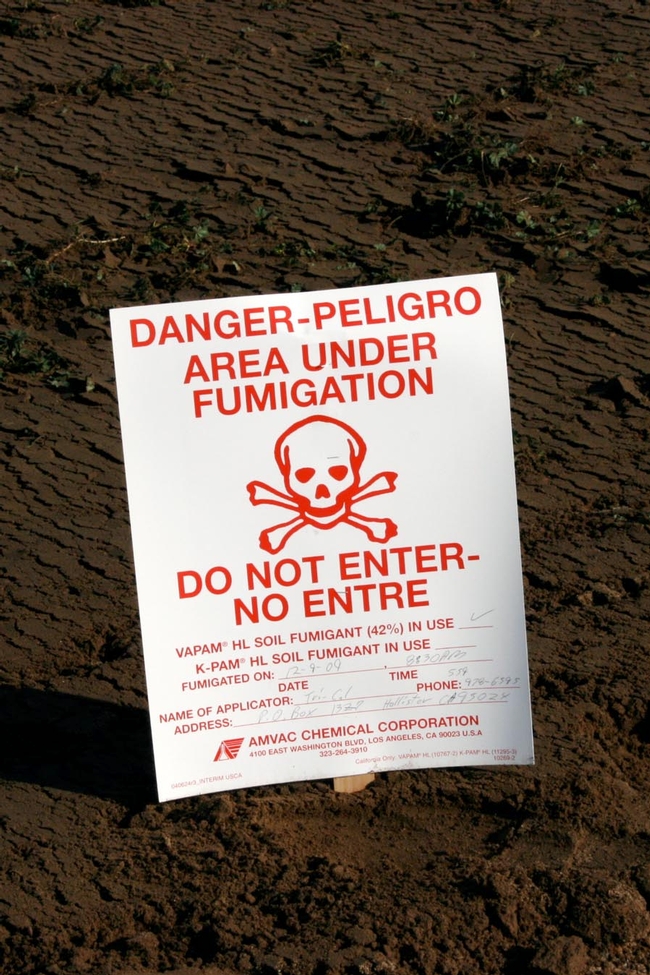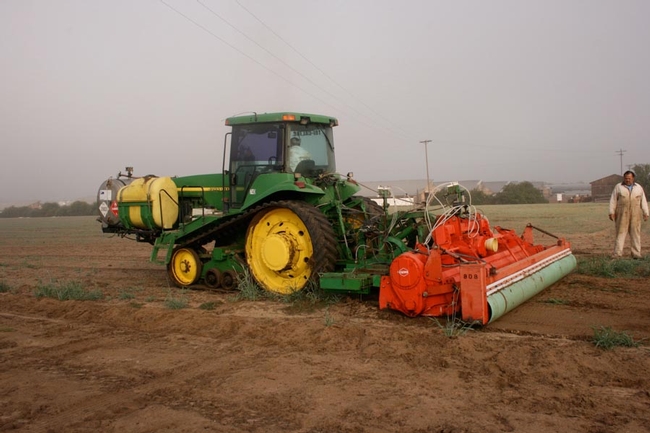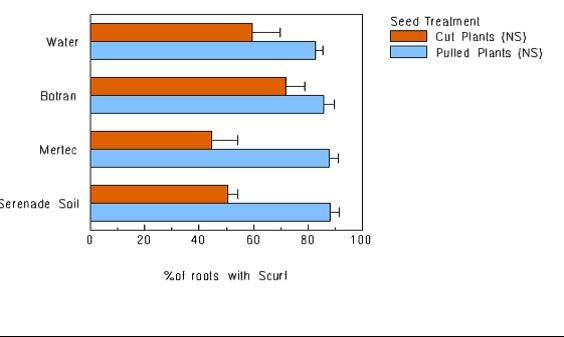Here's an article from the Sweetpotato Tips newsletter on hotbed cost production. Click here for a direct link to the January 2013 edition.
Hotbeds begin soon. If you did not use methyl bromide in the last year, improve weed management by using Devrinol herbicide at a rate of 12 oz per 1000 ft of bed in 5-6 gallons of water (sprayer calibrated at 30 gpa). Apply before the first irrigation and prior to the emergence of weeds. Incorporate with a brief irrigation—about 10 minutes will do. This gives about 80-90% suppression of most weeds and is safe on your plants.
Valor/Chateau is also very effective on weeds, and is in fact better than Devrinol. But there is little room for application error: 1.5 oz/ A provides excellent weed control, 2.0 oz/A will cause significant injury to sweetpotato plants. Rate: 8 grams per 1000 feet of bed, or for those with a postal scale, 2.8 oz per 10,000 linear feet. Like with Devrinol, apply before weed emergence and incorporate with a brief irrigation.
Last year, rolling in the hotbeds produced sick plants, which when taken to the field resulted in small, stunted growth and reduced plant stands. This was most obvious with Diane, since this variety is most sensitive to cold wet conditions at harvest. One of the pathogens was Fusarium, which causes stem rot in Golden Sweet. There are a few fungicides registered that can help reduce some types of general rolling in the beds (Quadris Top, Ridomil, Botran, Mertect, Phostrol), but these do not work on Fusarium. Better is to simply avoid planting cuttings from “bad” areas in the bed if this were to occur again.

Some have asked whether fumigation is even needed at all. Research I did with Dave Souza for 3 years showed that the main impact of fumigation was weed control. We never had disease or nematode problems. This was following a MeBr fumigated area on a 3-yr rotation, however, so we started clean. Essentially, fumigation is a low cost insurance policy, costing about $35 per acre when amortized over the 60 field acres that an acre of hotbeds plants. It does not increase plant productivity, nor will it prevent sick plants if the seed is bad (see above). For situations where you are “stuck” on the same piece of ground (because of the well) and have been for many years, fumigation should be maintained.
Consider cold beds. The main drawback to cold beds is that you start them a couple of weeks later—end of February to early March. To improve plant emergence and uniformity, use pre-heated seed, wet the roots before covering, and keep the plastic on as much as possible before emergence.
Hotbed cost of production estimates were done last year with different scenarios for hotbeds/cold beds and fumigation treatments (Table 1). Costs ranged from about $32,000 for solar, and almost $40,000 per acre for tarped MeBr with gin trash. Solar was less than fallow because it did not include gin trash. Add another $2500 per acre regardless of system for non-cash overhead costs (e.g. rent, taxes, insurance, capital recovery costs).
Table 1. Estimated hotbed production costs as affected by fumigation and herbicide treatments (2012), sweetpotato PAW-MBA project
|
|
(fumigation) |
(herbicide) |
$/a |
|
$/a |
gin trash |
$/a |
weed |
$/a |
|
$/acre |
$/acre |
|
|
MAIN PLOT |
SPLIT PLOT |
FUMIGANT |
APPLICATION |
GIN TRASH |
HANDLING |
HERBICIDE |
HOEING COST |
PLANT COST |
SUB-TOTAL |
TOTAL CULTURAL |
TOTAL OPERATING |
|
1 |
UTC |
UTC |
$- |
$- |
$2,095 |
$489 |
$- |
$172 |
$486 |
$3,242 |
$21,357 |
$35,960 |
|
|
|
Devrinol |
$- |
$- |
$2,095 |
$489 |
$48 |
$84 |
$476 |
$3,193 |
$21,318 |
$35,920 |
|
|
|
Valor 1.5 |
$- |
$- |
$2,095 |
$489 |
$26 |
$31 |
$511 |
$3,152 |
$21,243 |
$35,844 |
|
2 |
MeBr + Pic |
UTC |
$2,235 |
$1,565 |
$2,095 |
$489 |
$- |
$42 |
$496 |
$6,922 |
$25,028 |
$39,720 |
|
|
57/43, 350 lbs/A |
Devrinol |
$2,235 |
$1,565 |
$2,095 |
$489 |
$48 |
$20 |
$472 |
$6,924 |
$25,034 |
$39,726 |
|
|
|
Valor 1.5 |
$2,235 |
$1,565 |
$2,095 |
$489 |
$26 |
$15 |
$489 |
$6,914 |
$25,007 |
$39,699 |
|
3 |
PicChlor 60 |
UTC |
$987 |
$1,565 |
$2,095 |
$489 |
$- |
$43 |
$595 |
$5,774 |
$23,714 |
$38,375 |
|
|
45 gpa |
Devrinol |
$987 |
$1,565 |
$2,095 |
$489 |
$48 |
$32 |
$527 |
$5,742 |
$23,710 |
$38,371 |
|
|
|
Valor 1.5 |
$987 |
$1,565 |
$2,095 |
$489 |
$26 |
$19 |
$615 |
$5,795 |
$23,782 |
$38,445 |
|
4 |
Vapam + Telone |
UTC |
$542 |
$90 |
$- |
$- |
$- |
$38 |
$474 |
$1,144 |
$19,344 |
$33,901 |
|
|
40 gpa + 12 gpa |
Devrinol |
$542 |
$90 |
$- |
$- |
$48 |
$28 |
$462 |
$1,170 |
$19,362 |
$33,919 |
|
|
|
Valor 1.5 |
$542 |
$90 |
$- |
$- |
$26 |
$13 |
$480 |
$1,151 |
$19,318 |
$33,874 |
|
5 |
Pic only |
UTC |
$804 |
$1,565 |
$2,095 |
$489 |
$- |
$78 |
$525 |
$5,557 |
$23,633 |
$38,292 |
|
|
150 lbs/A |
Devrinol |
$804 |
$1,565 |
$2,095 |
$489 |
$48 |
$35 |
$496 |
$5,532 |
$23,638 |
$38,297 |
|
|
|
Valor 1.5 |
$804 |
$1,565 |
$2,095 |
$489 |
$26 |
$17 |
$497 |
$5,492 |
$23,597 |
$38,256 |
|
6 |
Solar |
UTC |
$- |
$1,350 |
$- |
$- |
$- |
$153 |
$529 |
$2,032 |
$20,287 |
$31,915 |
|
|
|
Devrinol |
$- |
$1,350 |
$- |
$- |
$48 |
$59 |
$558 |
$2,015 |
$20,241 |
$34,869 |
|
|
|
Valor 1.5 |
$- |
$1,350 |
$- |
$- |
$26 |
$27 |
$599 |
$2,002 |
$20,144 |
$34,770 |
|
|
Average |
|
$761 |
$1,023 |
$1,397 |
$326 |
$25 |
$50 |
$516 |
$4,097 |
$22,209 |
$36,675 |
Fumigation costs are for the entire area. Gin trash: 24 tons per 2500 linear ft of bed, $90 per ton
Gin trash handling: open bed, apply, roll, irrigate, cover
herbicide costs = product + application. Devrinol $11/lb, Valor $110/lb.
Plant cost based on 2008 - 2010 average and $15.15 per linear foot.
Scurf Fungicide Trial
It has been known for decades that an effective cultural method to control Scurf in planting stock is to cut plants in the hotbed above the soil line. Unfortunately, Covington grows so slow and short that it must be pulled to have a plant long enough for the transplanter. Therefore, this trial was conducted to see if fungicides could be used on roots or plants to control Scurf on pulled plants.
Cutting plants was the best way to prevent new Scurf infections in the field. The use of fungicides only slightly reduced Scurf, and only with cut plants. There was no difference between the fungicides tested, though Botran did not perform as well as Serenade Soil or Mertect. Even with cutting and fungicides infection rates were very high, >40%.

